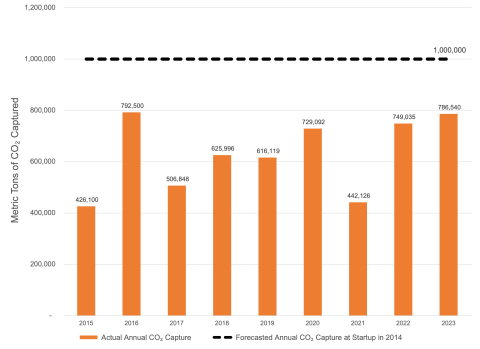European banks’ prudential transition plans must support climate neutrality goals

Key Findings
The European Banking Authority’s (EBA) latest proposed guidelines mark an important step towards incorporating transition plans into the prudential framework.
Proposed guidelines have placed rightful emphasis on climate-related risks, but the EBA should ensure that prudential transition plans comprehensively align banks’ activities and actions with European Green Deal objectives.
Transition planning has increasingly been recognised as a critical aspect of banks’ risk management, but the proposal does not adequately guide banks through the planning process required to achieve climate neutrality by 2050.
In January 2024, the European Banking Authority (EBA) launched a consultation on a set of proposed guidelines on the management of environmental, social and governance risks by institutions, as mandated in the Capital Requirements Directive (CRD). The guidelines place appropriate emphasis on climate-related risks but do not adequately address the widespread spillover of banks’ activities and actions.
A blog post by the European Central Bank indicates that “transition planning must become a cornerstone of standard risk management”. “Transition planning” focuses on the process of developing “transition plans” as a product. More banks have started the process, but greenwashing concerns have arisen in the absence of clear and comprehensive prudential guidelines.
IEEFA welcomes the EBA’s prominent steps in setting minimum standards and methodologies to incorporate climate-related risks into the prudential framework. However, CRD-based transition plans should be comprehensive enough to support European Union (EU) Green Deal objectives. The suggested “long-term” horizon of 10 years does not suffice to account for a managed phase-out of fossil fuels towards net zero by 2050, nor does it consider some banks’ long-term rolling relationships that lengthen their credit risk tenure. Banks should display plans that serve an entire pathway reaching net zero.
IEEFA further welcomes that the EBA reiterates the double materiality principle—an approach that underpins the EU sustainable finance regime. This reflects banks’ role in influencing climate change. However, approaches to materiality assessments should be handled with care—a concern IEEFA highlighted relating to the adoption of the European Sustainability Reporting Standards.
Considering the irreversible, severe and widespread nature of climate change, banks should review their exposure at an aggregate level and on a sector- and activity-specific basis. Banks should also assess how their activities substantially contribute and do no significant harm to the environment in order to reduce climate-related risks that can be amplified in the financial system. IEEFA submitted a response to the consultation, highlighting that transition planning requires more comprehensive, climate-aligned guidelines:
- Integration of climate risks in decision-making must adhere to net-zero objectives. Specifically, banks should formulate distinct approaches to the fossil fuel sector, such as ceasing new fossil fuel financing to align with the International Energy Agency scenario. For example, while some stranded asset risks are often understated amid financial market short-termism or backtesting, credit rating agencies are issuing clear, specific warnings about the financial risks of fossil fuels, prompting banks to improve their analytical capabilities to take a long-term view. Financial institutions have also increasingly adopted some form of exit strategy.
- Engagement strategies should be supported with a near-term exit plan. The EBA recognises the “last resort cessation of the relationship [between institutions and counterparties] when continuation is considered incompatible with the institution’s planning and risk appetite”. In IEEFA’s view, engagement strategies should entail a time-bound step-by-step action and escalation plan—and a well-defined exit plan when engagement fails to achieve results.
- Banks should proactively plan to shift financing—towards “green” and “transition”, and to 1.5-degree-aligned from non-aligned. The targeted shift would not only lower portfolio risks but also contribute to mitigating overall financial instability risks resulting from climate change. Green financing should contribute to scaling up proven, credible clean power solutions. Also, banks should be guided to develop “nuanced transition finance frameworks” for high emitting, “hard-to-abate” sectors, incorporating the practicalities of the EU taxonomy, feasibility assessments and undertakings’ transition plan assessments.
- Banks should be encouraged to develop sustainable and transition financing tools. For example, guidance on the useability of the upcoming European Green Bond Standard could establish banks’ multiple roles in facilitating continued green bond market growth to fund the investments required for transition and adaptation. Also, banks should be guided on the credible use and development of other sustainability-labelled products, most prominently sustainability-linked bonds or credit facilities, to incentivise decarbonisation.
- Banks should be held accountable for all their non-direct lending activities and actions that can exacerbate climate change, especially those related to fossil-dependant and non-temperature-aligned assets. Sector-specific facilitated emissions target setting is essential to this end.
- Banks should strengthen policies and governance to ensure the effectiveness of transition planning. This includes lobbying practices, integration of climate factors into executive remuneration, procedures to handle stakeholders’ controversies, and clarity of the use of carbon credits. For example, high transparency and integrity of lobbying practices can prevent any misalignment that could create the impression of unseriousness in achieving ambitions. Also, the use of carbon credits should not become an excuse to deter portfolio decarbonisation and should be allowed only when no alternative strategies are available.
Transition planning (the process) should be regularly reviewed. It works best when the transition plans (the output) are supervised, mandated and publicly reported. Prudential guidelines should be comprehensive and complementary to the Corporate Sustainability Due Diligence Directive and the Corporate Sustainability Reporting Directive to ensure coherent and credible planning ambitions and processes.
One positive development saw the Science-Based Targets initiative propose a net-zero standard for financial institutions, but the pilot version after consultation reflects a weaker fossil fuel finance position. The recent dissent over the use of carbon offsets indicates signs of SBTi's deviation from climate science. The EBA closed the consultation last week and is expected to publish the final guidelines by the end of the year. The routes taken by the EBA will determine how the financial system approaches risks and plays its part in achieving science-based net-zero goals bound by the European Climate Law.













